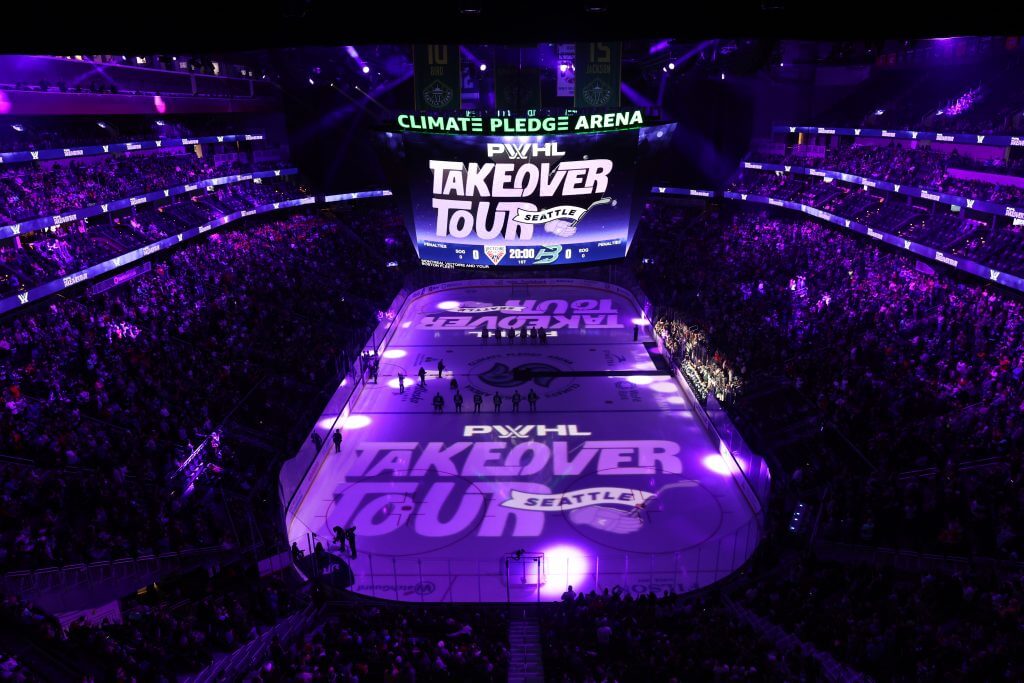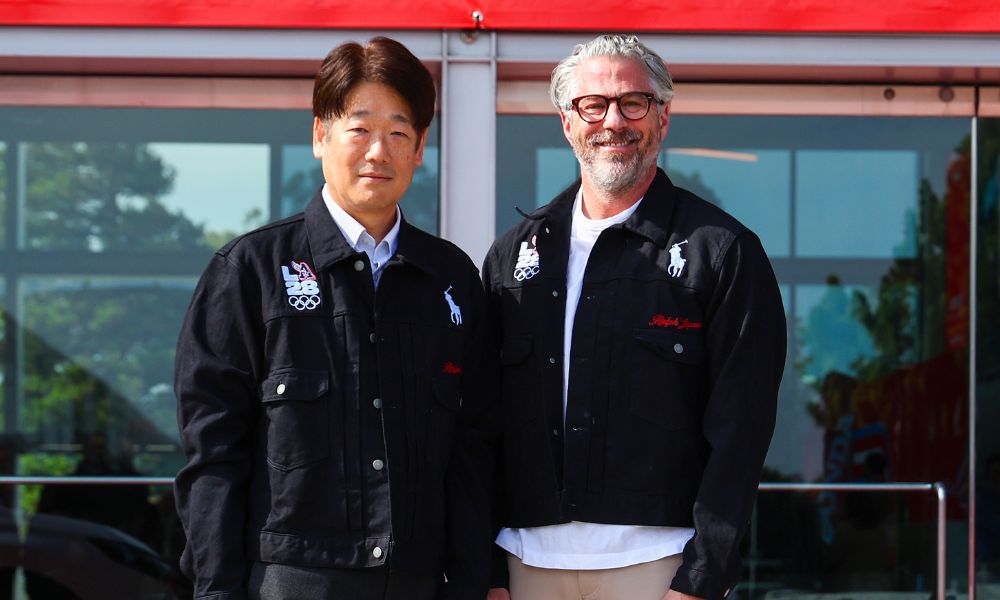
When Hideo Nomo debuted for the Los Angeles Dodgers on May 2, 1995, he was only the second Japanese-born player to appear in the majors, and the first in 30 years.
The maneuvering needed to reach that moment had already made Nomo a groundbreaker, pitting the player and his agent, Don Nomura, against Japan’s baseball establishment. To get to America, Nomo and Nomura had to figure out how Nomo could escape his contract back home.
No one foresaw the media storm that would follow: Nomo-mania. The righthander was a rookie marvel, commanding the attention of two countries with a split-finger fastball. Nomo was nicknamed “The Tornado” for his wind-up, which began with him stretching his arms to the sky, followed by a twist clockwise until his chest was almost square to second base.
Major League Baseball needed him. In 1995, the league was emerging from one of its darkest winters. The World Series had just been canceled as part of a player strike, and the upcoming season was still in limbo.
Today, Shohei Ohtani is the best player on Earth. Ichiro Suzuki’s enshrinement in the Hall of Fame is coming this summer. But entering 1995, the only Japanese player in MLB history was Masanori Murakami, who pitched in 54 games for the San Francisco Giants from 1964-65.
“The arrival of Ohtani, which in itself is just unbelievable, makes me, or anyone — you, somebody — reflect, ‘Well, how the heck did this get started?’” said Peter O’Malley, owner of the Dodgers when they signed Nomo for $2 million in 1995. “I think Ohtani’s performance has brought back Hideo, has brought back that time.”
The Athletic interviewed 17 people to remember Nomo-mania 30 years on. A typically quiet person, Nomo declined to be interviewed when reached through the San Diego Padres, for whom he is an advisor and instructor.
Interviews have been condensed and edited for clarity. Titles are as of 1995.
Nomo debuted in Japan’s top league, Nippon Professional Baseball, in 1990 and struck out 287 batters. He fanned that exact number again the following year. But by 1994, he was hurt, and he wanted out.
Help awaited in Northern California, where Don Nomura owned a minor-league baseball team. Nomura had played in the minors in Japan, and was the stepson of a great Japanese player, Katsuya Nomura.
Nomura believed Japanese players should push for change.
Don Nomura: We had a mutual friend, Tsuneto Fukuchi, who pitched for the Kintetsu Buffaloes.
One day he calls me. He says, “I have a player, he wants to go to the States. Can you talk to him?’’ And it was Hideo. That’s May of ’94.
I said, “You have to wait 10 years, because that’s that’s the rule right now,” and he says, “I can’t wait 10 years.”
Eiji Yamazaki, Kyodo News reporter covering Nomo: The manager of the Kintetsu Buffaloes when Nomo was a member was a famous left-handed pitcher, and he was confident in his own way of pitching, and seemed to insist on Nomo doing it as well. Nomo’s pitching form was distinctive and unconventional, even in Japan.
Nomura: One game he pitched, they were winning 11-2, he’s going nine innings with 172 pitches. And he got hurt. The manager basically said, “You don’t have the guts to throw.” Different age, different era.
Mark Langill, Dodgers publications editor (and now historian): If Nomo has a manager that caters to him? Maybe this never happens.
Nomura: I said, “I know you can’t wait 10 years, you’ll probably be done in three, if that.” Hideo did not like the way he was managed.

Hideo Nomo’s twisting, “Tornado” windup stood out wherever he pitched. (Simon Barnett / Getty Images)
Jean Afterman, lawyer working with Nomura: Don took me to a Yomiuri Giants game. I asked Don, “How come there aren’t more Japanese players playing in the major leagues?”
Don turned to me and said, “Well, I’m glad you asked.” And Don then told me that there was an agreement between the U.S. commissioner and Japanese Commissioner that effectively prevented Japanese players from coming to the United States.
Nomura: There was basically no path.
Yamazaki: In those days in Japanese baseball, players being traded or leaving a team was seen as negative. It was not uncommon for players who wanted to go to another team to be called selfish and self-centered.
Nomura: I went through the U.S.-Japan agreement back then. The U.S. team cannot sign players that were on the active list and restricted list, but didn’t say anything about the players on the retirement list. So the question became, “Wow, so if you retire in Japan, you can play in the United States?”
Afterman: We didn’t know at the time that this was going to be an effective loophole. If you’re the mouse that roared, the other side can take its enormous paw and swat you down.
The stakes were high enough that Nomura, over a period of a few months, sought and received three separate confirmations that the loophole was viable. First, he took a tape recorder to a meeting at NPB’s office. Then he had a friend with the Seattle Mariners, Lee Pelekoudas, pose the question through MLB. Lastly, he asked his mentor, agent Arn Tellem, to inquire in writing. The answers were consistent: A retired NPB player could play in MLB.
Arn Tellem, player agent: We sat in my office in Santa Monica, overlooking the ocean in a conference room. There was this mutual “aha” moment, that there was an opportunity there.
Nomura: The next question is, how do we get Nomo retired?
When trying to pressure players, NPB teams would threaten them with placement on the voluntarily retired list. Most players would fear the idea. Nomura and Nomo wanted nothing more.
Nomura: There were no multiyear contracts back then in Japan. I told him, “Let’s go with a multiyear deal.” And I think we came up with a figure of six years, $36 million. He was making about $1.5 million then as the best pitcher in Japan. I said, “If they guarantee you the next six years, stay with the Japanese team, because that’s a lot of money.”
We went for our first meeting. I walked in with Hideo into the hotel room in Osaka, and Mr. Yasuo Maeda, the then-president, just said, “Nomura, Get out of the room. We don’t recognize you.” I said, “I’m his agent.” He said, “We don’t need agents.” Then he grabs Hideo’s arm, and he says, “You stay here.”
Afterman: I always call it, not elegantly: Hideo had the balls of a lion. Hideo was strong and courageous.
Nomura: Hideo slips his arm out and says, “No, I’m leaving too.” And then I said, “Hideo, why don’t you stay? We came all the way from Tokyo.”
About 15 minutes later, Nomo comes out. He said, “They’re really pissed.”
Bobby Valentine, newly named manager of the Chiba Lotte Marines: The rumors started to appear. At a sushi dinner, I remember hearing as though it’s a secret, that Kintetsu was rejecting the idea of a long-term contract.
Nomura: The next meeting took place Dec. 19 or 20th in Osaka. We kept saying, “Six years, $36 million.” Finally, Maeda, the president, told Nomo, “Sign this contract or we’re gonna make you into a voluntarily retired player,” and that was the word we were waiting for.
I was waiting in the lobby, Hideo comes running out of the elevator, he says, “We did it.”
Valentine: Most of the baseball community in Japan thought of Nomo as a traitor. They didn’t like the concept.
Nomura: With all the negative media, and all the crap I got from the media and people in Japan wanting to kill me — called a traitor, and everything else, I didn’t have any time to think it was a genius idea.
Word got out in the U.S. in mid-January 1995 that Nomo wanted to come to MLB as a free agent. In the U.S., Nomo was mostly unknown.
Fred Claire, Dodgers general manager: I received a phone call from the agent Arn Tellem: “Fred, I’ve gotten a call from a fellow by the name of Don Nomura. Do you have any interest in signing Hideo Nomo?”
I said, “Arn, I have to be honest with you, I have no idea in the world who in the hell Hideo Nomo is.”
Acey Kohrogi, Dodgers official: I was helping Dodgers owner Peter O’Malley with Japan affairs. I said, “OK, let’s call some of our friends in Japan.”
Nomo set out to visit several teams. The first stop was Seattle. Next was San Francisco, then L.A., and after that, New York for the Yankees.
Nomura: Seattle helped me so we gave them the first shot. They had him do a physical. He failed the physical.
Dodgers owner Peter O’Malley: I had never heard that, ever.
Nomura: We were really welcomed. We went to the Kingdome, Jay Buhner and all those guys were out there: Edgar Martínez greeted us.
Seattle came back and said, “We can’t give him anything significant. We don’t like what we saw on the MRI of his shoulder.” Seattle was certainly on top of the list.
Lee Pelekoudas, Mariners executive: We had some concern. Obviously, it was misplaced!
Nomura: We had a good meeting the following day at Candlestick Park, they offered us a major-league contract, two years, fairly low, lower than what he was making in Japan. We said we’ll think about it.
We didn’t want to cross the line because baseball was in a strike. If Nomo was going to sign a major-league contract, it would have been either wait, or have a letter of agreement.
Then we went down to Los Angeles.
The Dodgers had a rich history with Japan, from ownership down to manager Tommy Lasorda. O’Malley, who first visited the country with the 1956 Dodgers, knew the stakes for Nomo would be high, and that criticism in Japan could follow.
O’Malley: I said to myself, “Wait a minute, is this going to put the Dodgers negatively in the mind of the fans? Is this going to be detrimental?” I had a meeting with myself.
I said, “No, you know what, if we present this accurately, honestly, that he wants to face the best hitters, that’s his challenge, and he’s heard they’re in the United States, I think the fans will accept that. Not all, but most.”
Derrick Hall, Dodgers public relations: Peter O’Malley said, “If we get him, your job is going to get very interesting.”
O’Malley: I told the people in my office, “I don’t want to talk contract. I don’t want to talk money. Don’t bring it up.” I wanted him to tell me about himself, and I wanted him to know more about me.
Now the meeting’s been maybe 90 minutes, and I said, “I’d like to see you tomorrow,” and I knew they were leaving to go to New York. They look at each other, they’re talking in Japanese.
Nomura: Everything stopped with the Dodgers. He did not meet with any other club, or talk to any other club.
O’Malley: Don says, “Yes, we can come back tomorrow.”
Tellem: It became clear that the Dodgers, putting aside money, were the best fit. The Dodgers probably have the most unique history of championing diversity, starting with Jackie Robinson. Given Los Angeles’ large Japanese population, this was the right place.
Claire: I remember meeting in my office, and Don Nomura said, “What we really want is a major-league contract.” I said to him, “Major-league contracts are to be earned and not given. And I want you to explain that to Hideo.”
Hideo kind of shook his head in an understanding way, and Don came back and said, “Then the one thing that he’s asking is, will he be given an opportunity to make the club in the spring?”
And I said, “Don, without question, we will give him every opportunity.” It was a $2 million bonus, which in today’s world seems like a typo.

Peter O’Malley shakes Hideo Nomo’s hand after officially signing him to a minor-league contract, while Don Nomura, at left, looks on. (J.D. Cuban / Getty Images)
The signing garnered attention everywhere.
Gene Orza, a top lawyer at the MLB players’ union: Major League Baseball has always been sensitive to honoring the Japanese reserve clauses, because of a fear that if we didn’t honor theirs, they wouldn’t honor ours, and they would poach. Some people were afraid this was going to open up the floodgates, so to speak.
Tom Candiotti, Dodgers starting pitcher: All eyes are on him when he gets to spring training. Everything he does, there’s cameras on him. We really didn’t quite know the big deal he was in Japan.
Hall: He came to Dodgertown, and I’ve got this huge group of Japanese media that have been waiting for his arrival. He comes in this minivan, and they all start chasing after him. He had his driver just going around in circles at Dodgertown until they just all dropped off, they could no longer run.
Yamazaki: Including newspaper, television, and camera crews, I think there were always around 15 to 20 people.
Bob Nightengale, Dodgers beat writer for the LA Times: It was crazy. Not like Ohtani, not that big, but it was big: covering one player, watching every single bullpen session.
Hall: We were playing the Yankees in Fort Lauderdale, and their PR person came over and said, “The boss wants to see you.” I had never met George Steinbrenner. He takes me over to his box, and George points down and says, “Who is this guy and where’d you get him from?”
The strike ended in early April, delaying the start of the season. Nomo made his minor-league debut on April 27, 1995. He was in the big leagues a week later, and threw five shutout innings against the Dodgers’ biggest rival, the San Francisco Giants.
Nightengale: Is this guy gonna do well, is it just a flash-in-the-pan type thing, novelty act? Nobody had an idea among the writers.
Candiotti: I just remember saying through his interpreter before his first start, “There’s a lot of nerves and everything, just go out and do your best.” And then I go, “And don’t f— up.” He just started laughing.
I happened to get along great with him. We’d sit on the bench, and he knew enough words, and he was teaching us enough Japanese words that we could kind of communicate.
Yamazaki: I remember him being a very shy person, and with the exception of a few close reporters, there was an awkward atmosphere when he interacted with the media. He didn’t say much.
Candiotti: These guys and their cameras, they followed him everywhere, he was like a rock star.
Dodgers first baseman Eric Karros: Flashes would go off every time he’d pitch. There were times where there would be media that would follow him into the bathroom.

A large media contingent chronicled Hideo Nomo’s every move. (Rhona Wise / AFP via Getty Images)
June, his second month, is when Nomo really took off. In his ninth career big-league start, he struck out 16. That began a six-start stretch where he compiled a 0.89 ERA and 70 strikeouts in 50 1/3 innings.
Langill: You’re starting to compare him to Sandy Koufax records, because he had like, 50 strikeouts in a four-game span. I don’t think that Dodger fans in L.A. realized what pressure he was under.
O’Malley: He was very serious. The fact that he was the first after Murakami, you bet he carried that, and that’s why I admire him even more. Because the spotlight, the focus on him, was extraordinary. Chan Ho Park went through pretty much the same thing with the Korean community.
Yamazaki: It was interesting to see how the reactions of the American media and fans were different from those in Japan. American society is not negative about people moving around. If anything, it tends to be viewed as positive.
Kohrogi: Mr. O’Malley used to always tell me back then, “I’ve never seen a player that has that much focus, with all the noise.” A whole country is watching the guy pitch, and it doesn’t even faze him. You’d see Japanese businessmen watching Nomo pitch on the street corners, because it was on a big monitor on the side of the building.
Candiotti: I think they started bringing Yoshinoya into Dodger Stadium instead of Taco Bell. They were sending like, 747s over from Japan on the days he pitched.
Kohrogi: You have people flying from Tokyo just to watch him pitch and flying back. Japanese tourists coming in, leaving with bags of Nomo t-shirts.
Candiotti: He’s pitching. I follow him in after the first inning and he’s taking his jersey off. I’m like, “OK, that’s weird.” Pitches the second inning, comes back in, changes his jersey again. And I’m going, “What the f—?”
So I asked Dave Wright, who was the clubhouse manager at the time. He told me that every one of Nomo’s game-used jerseys that he pitches in, he gets $50,000 a jersey in Japan.
Afterman: The worst marketing request we had was a company that wanted a drop of Hideo’s blood because they were making pendants, and they purported to have a tiny bit of DNA from famous people in them. Don and I looked at each other like, “Oh, hell no.”
On July 11, 1995, the rookie Nomo started in the All-Star Game for the National League in Texas. He threw two scoreless innings, allowing one hit and striking out three.
Robert Whiting, author of “You Gotta Have Wa”: A Japanese TV announcer outside the stadium pregame faced the camera and said breathlessly, “Can you believe it? Can you believe it? A Japanese player is starting the All-Star Game.”
Valentine: I was in Tokyo during that All-Star Game. I saw the big screen set up in public squares. By then, it was people changing their story, getting behind him, kind of pulling for him.
Nomura: I haven’t forgiven the Japanese media, and I don’t think he has.

Nomomania ratcheted up ahead of his All-Star Game appearance. (Yoshikazu Tsuno / AFP via Getty Images)
Nomo was named the National League Rookie of the Year in 1995, and Nomo-mania rolled into the ’96 season. Late that season, he threw a no-hitter at the best hitter’s park in the majors, Coors Field.
Nomo stayed with the Dodgers into 1998, when he was traded to the New York Mets. More Japanese players followed in his footsteps and came to MLB in the late 1990s, including Shigetoshi Hasegawa, Hideki Irabu and Masato Yoshii. Ichiro Suzuki arrived in 2001, the same year that Nomo, then with the Boston Red Sox, threw his second no-hitter.
Nomura: The success that they had in Major League Baseball created more abundance of Japanese players, but it was still tough to bring any of them over.
Afterman: Players in Japan were not permitted to have agents. We were going to meet a player in Tokyo. As a former actress, it was just so much fun to me: I would wear a fake wig, I would get in a taxi cab. I’d drive around Tokyo to make sure nobody was following. I’d go into an underground parking lot. There would be a car waiting to drive me somewhere else. It was cloak-and-dagger stuff.
Yamazaki: What Nomo and Don Nomura did, there is no doubt that it marked a turning point in the history of Japanese professional baseball.
Orza: The three most important people in the history of baseball: Babe Ruth, Jackie Robinson and Marvin Miller. But if I had to name a fourth guy, it might be Nomo. He opened up the floodgates. He made America respect Japanese baseball more, because he was so successful.
Tellem: You needed one trailblazer, and that was Nomo. It changed my entire outlook of how I was going to be an agent. I was going to make it a priority to expand my practice globally.
Hideki Okuda, Sports Nippon reporter: I place him on the same level as Ichiro and Ohtani. Although he rarely appears in the media, many people are grateful to him and respect him as someone who contributed significantly to the development of Japanese sports culture.
If MLB continues to emphasize the importance of globalization, I believe it should show greater respect for Nomo, the pioneer who started it all.
MLB’s regular season opened this year in Tokyo, between the Dodgers and Chicago Cubs. Nomo was asked to throw out a ceremonial first pitch.
O’Malley: We had lunch, and he said, “Well, I told them no.”
He’s very modest. Whatever the definition of braggart is, he is the opposite. With his youth teams, he devotes an awful lot of time. He wants to give back, that’s his expression, to the kids who were overlooked.
He wants to do what he wants to do.
Valentine: It is remarkable what he did, and he should be in the Hall of Fame for it. It took courage, but it wasn’t only courage — as though he already was in the car, and to drive it 160 miles an hour took courage. He had to build the car.
(Illustration: Will Tullos / The Athletic; Photos: J.D. Cuban, Owen C. Shaw, Al Bello, Dan Groshong / Getty Images)
8
































 Timberwolves’ fatigue, Chet Holmgren’s defense & more reaction
Timberwolves’ fatigue, Chet Holmgren’s defense & more reaction  | SC with SVP
| SC with SVP











































